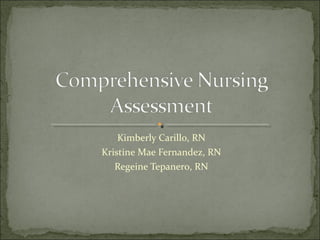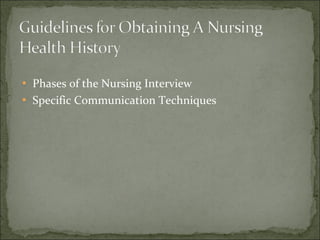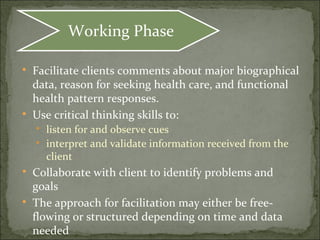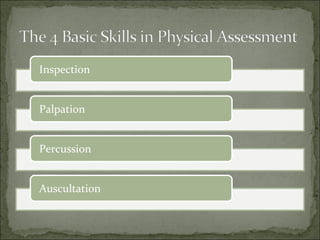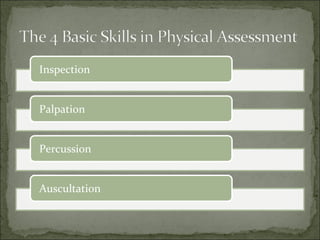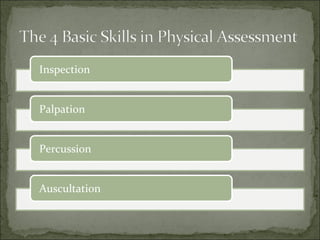The document provides an overview of the components of a nursing assessment. It discusses Gordon's 11 Functional Health Patterns which provide a framework for collecting comprehensive nursing data. It also describes the purpose and techniques for obtaining both subjective and objective data, including conducting a nursing interview, performing a physical examination using inspection, palpation, percussion, and auscultation, and developing a health history. The document aims to help nursing students understand how to systematically assess a client's health status.
